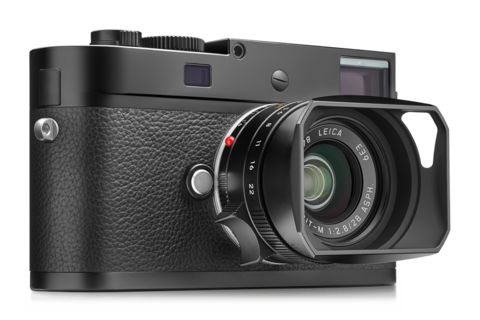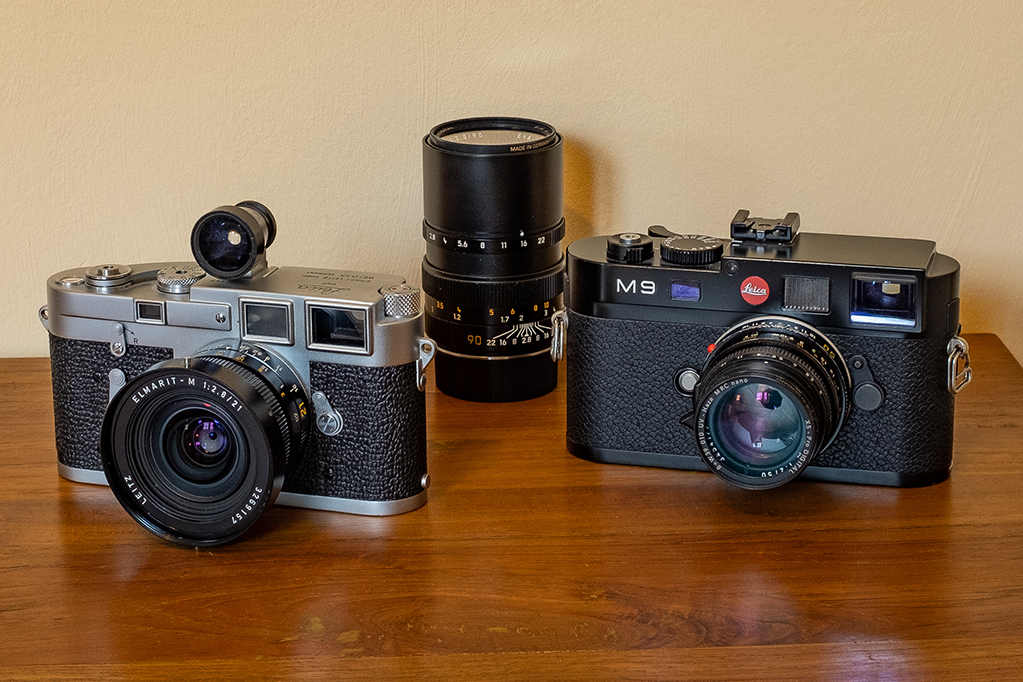One Camera, One Lens
writer: russell j.t. dyer; posted: Aug 2018; revised: Aug 2018
Leica M3 Camera,
Leica Elmarit-M f/2.8 21mm lens
Leica M9 Camera,
Leica Summicron-M 50mm lens
Leica Elmarit-M f/2.8 90mm lens
Six years ago, I wrote a post about how Almost Everything Must Go. At that time, I had realized that I took better photos with rangefinder cameras. So I decided to sell all of my DSLR cameras and lenses and switch to only rangefinder equipment. It took over a year to complete the transition and included some Adventures in Gear Acquisition. The result has been that I’ve enjoy photography more and I’ve improved my skills.
At this point, I have a Leica M9 digital camera and a Leica M3 film camera, along with a Leica Elmarit-M f/2.8 21mm lens, a Leica Summicron-M 50mm lens, and a Leica Elmarit-M f/2.8 90mm lens. It’s an excellent line-up. However, I tire of what’s required to get film processed and converted to high-resolution digital images.
There is a school of thought that if you have too much equipment, you have to think too much when photographing. More than one fixed-length lens, or even just one zoom lens is too much and will deter from your creativity. They recommend owning only one camera and only one prime lens so that you will know them so well that they become an extension of you. Not everyone agrees with this perspective, but I’m starting to appreciate the one lens, one camera policy for creativity—and to reduce the bother. Two cameras and three lenses are unnecessary for me, so I’ve decided to consolidate even more.
A Minimalist Camera

Leica M-D Camera<br/>Leica Elmarit-M f/2.8 28mm Lens
As part of my minimalist efforts regarding photography equipment, I want a new digital camera with a larger image sensor, but less controls. What I want is a digital camera that has manual controls for exposure and nothing else. When I take a picture, I just want to set exposure, compose the shot, focus, and click. I don’t want anything else.
In a recent article I wrote on Staying Creative, I spoke about how an LCD screen is a distraction and unnecessary, and digital cameras should be more like film cameras with minimal controls. In another article about A Digital Film Camera, I wrote about the Leica M-D digital camera and how it’s similar to a film camera in that it has only a few controls and no LCD. It’s exactly what I want and nothing more, so I’ve decided to buy one. Leica has stopped making them, but I can get a used one in almost new condition.
An All-Around Lens
If I’m to have only one lens, I want a lens for all of my photography needs: landscape, architecture, street, studio portraits, and travel. The 50mm lens I have now could become my one lens—most people use this size when they have only one lens—but it’s not wide enough for me: it has only a 47 degree angle of view.
The 21mm lens I have now is good for landscapes and architecture with its wide angle (94 degrees), but is not good for closer shots of people. A few years ago I had a Zeiss ZM Biogon f/2 35mm lens that I used for street photography and studio portraits. It had a 63 degree angle of view, which also worked moderately well as a wide angle lens. A happy medium, though, may be a 28mm lens, which has 75 degrees.
For me, because of the angle of view, the 28mm is more versatile than the 35mm or 50mm lens. When you’re using the 28mm lens, if you want to zoom in, you just stand closer. If you want a tighter shot, just crop the photo later on your computer. However, when you’re using a 35mm or 50mm lens indoors and want to shoot the whole room, you can’t always get far enough back. So, if I am to have only one lens, a 50mm lens would be bad, a 35mm would be good, but a 28mm would be a better.
There are several Leica 28mm and 35mm M-mount aspherical lenses still in production. There are the Summicron-M f/2 28mm and 35mm lenses, and the Summarit-M f/2.4 35mm lens, and the Elmarit-M f/2.8 28mm lens. The Summicron lenses are much more expensive and larger. I’d prefer to spend less, even if the lens doesn’t open as wide. I’d especially prefer a smaller lens so that the camera and lens won’t take too much room in my bag when traveling.

Leica M-Mount 28mm & 35mm Lenses
The smallest of these is the Elmarit-M f/2.8 28mm lens. It’s only 30.7 centimeters long—the Summicron-M f/2 28mm is 41.4 centimeters long. The most inexpensive one is the Summarit-M f/2.4 35mm lens. It’s twenty-one hundred dollars less than the Summicron-M f/2 28mm lens. The Elmarit-M f/2.8 28mm lens isn’t much more, though. So I’ll probably get it, unless I find a good deal on a Summarit-M f/2.4 35mm lens I can’t resist.
Next Steps
My plan now is to sell all of my cameras and lenses over the next few months. Once that’s done, or at least underway, I’ll buy a Leica M-D camera and a wide-angle lens. Hopefully, I’ll be able to buy both around the same time: it will be frustrating to have a camera with no lens, or a lens with no camera. Once this transition is complete, I need to start a Daily Photo routine like I did when I first bought a digital Leica camera years ago. This will help me to learn the camera well and to rekindle my passion for photography, so that I’ll take much better pictures. That’s the ultimate goal, after all.
